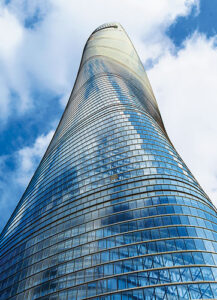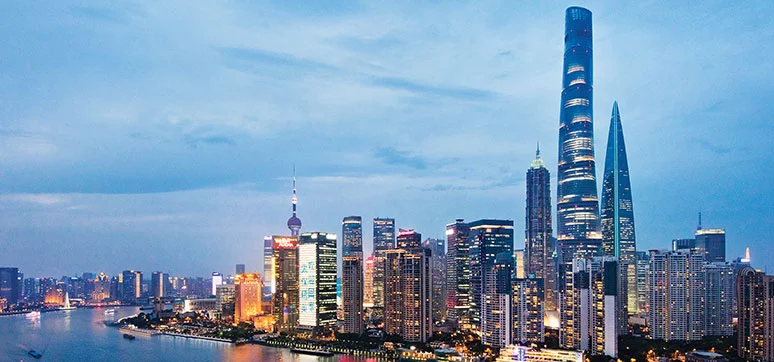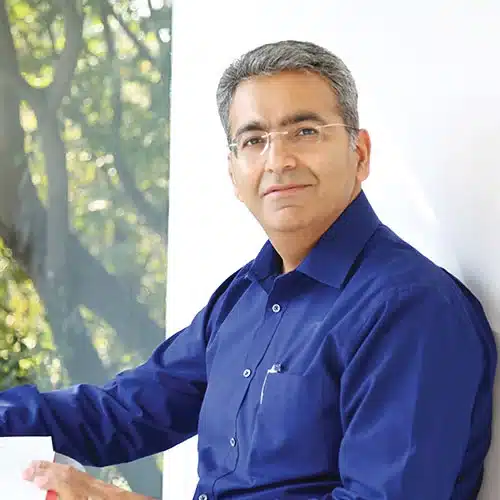Please tell us about your practice and its growth in India?
Gensler is a mission-driven firm, and we believe in making the world a better place through the power of design. We’re deeply committed to shaping the future of the world’s cities and there are several key aspects that go into this, including climate change and how we can design in a highly sustainable and reliant way. We’re also looking at the future of mobility in these cities, along with technology and smart cities. Our job is to make the world a better place. There are 50 Gensler locations around the world, which provides the firm with a unique, broad view of what our clients’ needs are. We’re the biggest architectural and design firm in the world with more than 6,000 team members. We’re an incredibly diverse group, with a diversity of thought, which is important to us.

Gensler Bangalore has been doing projects in India since 2006 and specializes in areas of workplace and office buildings, mixed-use and residential. We are a leader in shaping iconic structures of skylines, defining cities and communities; with a high retention rate of clients across all industries coming back to us. We are focused on delivering the best solutions locally with the aid of global resources and expertise and have since then done a lot of work across the country.
With one of our specialties rooted in the workplace, we have grown our consulting practice area and worked with many established global players to design their workplace offices. Design is constantly evolving, and our clients are facing different obstacles in their markets than they were 20 years ago. We support them in reacting to that change from a global point of view. We are really focused on being local and understanding the local market but being as big as we are and our practice areas are set up in a network way across the world. We are sharing information of best practices all over the world so a client that comes to us won’t just see what’s going on in India, they will see what is going on all over the world. We think our clients are really looking for the best ideas and so we can help them know what’s out there.
Over the years, what kind of changes are you seeing in Indian Architecture?
Since well before COVID-19 was part of the global lexicon, research has shown how green building strategies improve the health and well-being of occupants while also reducing carbon. With companies ever more focused on environmental, social, and governance (ESG) considerations, the value proposition of resilient design is undeniable.
As the governments at every level continue to implement stricter regulations on emissions, designing for a more sustainable future protects the long-term viability of investments. Buildings and developments that don’t prioritize design resilience will lose value as they come to be considered obsolete, uninsurable, and un occupiable. Future-minded business leaders, real estate developers, and investors recognize the threat posed by the changing climate. As a result, they are embracing the opportunity to invest in spaces and structures that use less energy, are built with healthier materials, and can adapt to severe weather events.

Gensler is forging ahead into this new era of smart sustainability by using technology to help solve design problems. In Asia, the team is writing programs around parametric design. We are automating the design process. It’s all about process innovation and looking into the future.
Another key factor is our data-driven insights. With access to our Gensler Research Institute, we are able to predict upcoming trends based on data and incorporate this into our design. This has allowed us to be one step ahead when providing counsel to our clients, extending our analysis, insights, and additional perspective into the original brief. Our teams focus on designing sustainably, by using fewer resources than doing less or no harm to the environment. Progressing into the future, our goal is to design net-zero energy buildings and explore ways to design buildings that will improve the environment.

You have over 29 years of experience as an architect. What prompted you to become an architect and choose this as your career?
It’s a long story. I was a good student in school and didn’t know much about architecture until I got into that stream. So it happened by chance. Subsequently, over the years, I discovered my passions. And I think, once you align with your passions, that is when you succeed. I was very passionate about understanding construction details and engineering services And much credit goes to my partner Jyoti Rath with whom I worked for almost 11 years at the beginning of my career, and our ideology was “God is in the details”. So every project we took was very well designed and detailed.

Gensler has many landmark projects around the world. Could you please tell us about your projects in India? We’ve had the opportunity to work with some of the biggest names in the industry. By combining our deep practice area knowledge and research, we’ve delivered some of our best works for clients like Barclays, Intuit, Tatas, Wipro, Bagmane, JPMC, Microsoft, Reliance, etc.
We are working with a lot of global clients and well-known developers, doing high-end residential and commercial buildings in Mumbai and Bangalore. Our portfolio also encompasses consulting, commercial workplace interiors, commercial office buildings, and large master planning projects.
Any building is identified by its façade; hence the clients too are ambitious. There are many kinds of innovative façade materials available in the market, including for cladding/glazing. How do you go about selecting façade material?
It’s very important to set your goals with your clients at the onset. Clients may have a budget or time constraint, or they might have certain parameters in mind which they wish to achieve for their projects, e.g. a LEAD Gold/ Platinum or Wellness certification. It’s vital to spend time with your clients to understand their vision and help them with the right brief for the project. Achieving net-zero carbon will require us to transform how we design, build and operate buildings of all types and scales.

When selecting a façade material, it is imperative to look at the sustainability aspect of it as it involves decisions such as importing the materials or sourcing for them locally. While designing a glass building, we consider what is important to the client. Considerations include whether views matter from the inside of the building, interior comfort, using glass from floor to ceiling, etc.
These points are analyzed well. To achieve sustainability, there are two ways of protecting façades from radiation penetration inside a building. One could look at protecting the façade from outside, by not letting the sun in using shading devices. There are multiple sun shading methods and materials like vertical fins or perforated screens. There is also the option of using a lot of glass on the façade which affects the selection as some of these glasses are expensive. The budget also determines the installation of shading devices, either manually controlled or automated. Then there are other ways of controlling light and heat ingress. In the Middle East, some fancy buildings have adaptive façades which are like screens or skin in front of the glass, which opens and closes depending on the outside glare and temperature. The right solution could be protecting the façade from outside because once the radiation/heat has entered inside the building, the only solution is air conditioning. Hence we sensitize our clients and recommend sustainable solutions appropriately.
Another important factor is the selection of materials. While it is easy to import materials, sourcing locally available materials will reduce the carbon footprint. All these parameters, the purpose of the building, and the orientation of the building are important in selecting the façade design and materials.

Tell us about some innovative technologies and materials that you have used on façades?
One of our projects, the second tallest building in the world, which is the Shanghai tower, has been winning many accolades and awards for sustainability. Here, the project has another skin of glass around the tower. It is a twisted tower. There’s a reason for the shape of the tower to be twisted.
When pressure studies were done on how the wind and rain pressure will behave around that tower, we found that this form or solution was most effective for the building. When you’re doing very tall buildings, you have to take care of many parameters like wind and water pressure and ventilation.
Also, you need to consider these factors while placing atriums and open spaces from outside. Otherwise, you won’t be able to stand in an open area in an open atrium, like let’s say on the hundredth floor. So there are ways and tricks of doing these things. In the Shanghai Tower construction, there was zero glass wastage. With the latest technologies and tools, we can achieve these goals. There are many smart tools available to analyze every aspect of the design, installation, and testing of complex façades.
There is another project – The PNC Plaza building. It has an operable automated façade, which opens up and it allows the building to open and ventilate when required. So today you have these different technologies and tricks, which make it possible to have really amazing façades and buildings with complex parametric designs.
The glass and glazing industry has gone through a major change over the past 15 years. What are your observations?
There is a lot of research on glass – the behavior of glass and how we can cut operational costs. We have insulated and double insulated glass in the market for some time now, and some advancement on products like kinetic façades and other complex façades. Technologies like kinetic façades protect interiors from the outside harsh weather and allow for the views not to be compromised at the same time.
Another aspect of sustainability is by blocking views or using less glass. That said, the glass industry is going through a lot of research and innovations. We are looking at many ways to prevent heat ingress, e.g. by filling the gap between the glass layers with liquid and algae or inert gas. With these kinds of innovations, we are building better sustainable buildings these days.
Architects are also leveraging technologies, e.g. the electro-chromatic glass and solar sensitive glasses which are quite costly in the market. We need to consider backward integration with other services while taking such decisions. At this moment, I am not aware of projects with electro-chromatic or solar-sensitive façades in India. However, building an operable façade is possible, either mechanical or automated and there are mechanical systems to support radiant cooling for such buildings.

Convincing a client regarding certain design features is not an easy task. How do you go about it?
Convincing the client with sufficient data is important. For example, a certain type of glass will save so much energy although its cost is high. It is about supporting the research and presenting with data and analysis to convince them of the right solution. Again, it depends on the budget, so these decisions are not just driven by architects. We work as partners with developers to make sure that their businesses are successful with sufficient return on investment (ROI). We also consider factors such as climatic conditions, where, for whom, which markets are they building for, and whether that market will support that kind of structure. The buildings should be contextual.
Can you talk about some of your Indian projects where you have been innovative in design and technology?
We are working for a known Bangalore developer. It is currently under construction and will be occupied by one of our clients who appointed us to do their workplace design. When we started designing the building, the client was insistent on a particular design where the building core was on one side of the facade. As a result, the buildings we’re working out to be very boxy with little daylight penetration.
When we relooked at the master plan of the campus, we were able to redesign the project after taking them through certain case studies. We worked along with the structural engineers to develop a different grid size in order to get column-free spaces inside the offices and to have a central core, which was also free of any shaft doors. This design allowed for better daylight penetration and column-free office spaces and we were able to convince our client that this was the ideal solution.

What’re your views on the future façades?
As an architect, one would like to have a great view from the inside of the building with complete visibility to the outside world. In India where the climate and conditions are not ideal for large openings, we can possibly protect the façade using shading devices and also allow for a great view. The façades should be easy to maintain in the long run. When we say sustainable, it is not just about energy but it has to sustain a certain human experience, lifestyle, and timespan.

Please tell us about the tools and software being used to design sustainable façades and fenestration?
The tools allow one to do sun path analysis and other sustainability analyses of the buildings swiftly. We are designers and not sustainability engineers. There are firms that focus on energy engineering/ sustainability analysis and we collaborate with them. One should have a basic understanding of these tools and how to work with these tools. We use them in our studios to check the orientation of the building and design façades. These tools allow a quick study to be done on a building. Which façe of the façade has to have solid masses because those are the ones with maximum heat gain. These tools help us to establish the right orientation of the building. With a BIM platform, it is easy to analyze your requirements with the available software plugins. Our teams are well-versed with these tools and all our Gensler offices are completely equipped with this platform.
Nowadays people are talking a lot about intelligent façades. So could you please define the term and how intelligent façade will bring sustainability?
To restrict intensive heat and minimize the use of excessive air conditioning in the buildings, we have façades that are movable according to the sun-path. These are automated systems and they can be customized. We can design adaptable shading according to the needs of the project. There is a lot of research on the materials too. For example, the glass changes its character according to the intensity of the sun with particular treatments. I think we’re not far away from a time where the glass on the façade can act as a shading device itself. That and more could be the future of glass façades.
Please tell us about media façades?
Some of our façades showcase digital experiences. When you go to cities like Shanghai, you see façades with media projections on them. One can advertise on façade, and use them as billboards or they can be used to convey some messages. It can be found in India too. On one of the campuses for one of our clients in Pune, they’ve used their façade for media projections and they celebrate occasions or convey messages to the public through this medium.
Please list some very innovative designs, which you wish to see in the future.
I would say, probably self-cleaning buildings. Another is innovative connectivity between the floors in offices and commercial buildings. I would like to see much flatter or horizontal buildings and campuses with skylights for light penetration, with connected larger floor plates, which are ideal for human connectivity, chance encounters that trigger innovation. The future of campuses depends on how the designs can activate the ground planes. There is no need for double or triple height atriums if there is no /less activity in that space. Also, activating and using the available spaces effectively and helping to generate revenue.
What is your advice to young/ upcoming architects?
Today our graduates are much brighter, much more talented, and they are well-versed with the latest software and tools. They are savvy with coding and can design a building based on codes. We have amazing young talent in the country. The new generation of architects is doing extremely well. They are way ahead compared to what we were. They have better tools, so much energy, and passion. I think they should just go with their passion.
Another thing is that creativity is not dependant on tools. The tools help you express your creativity better. Investing time in learning these tools would definitely be helpful in the future. One should know how to use the best of tools to generate data because your clients want to look at data. Future buildings are going to be complex.
It’s not just some nice skin outside, but there’s a lot of thought process that goes into how you engineer them to make them sustainable and timeless.














